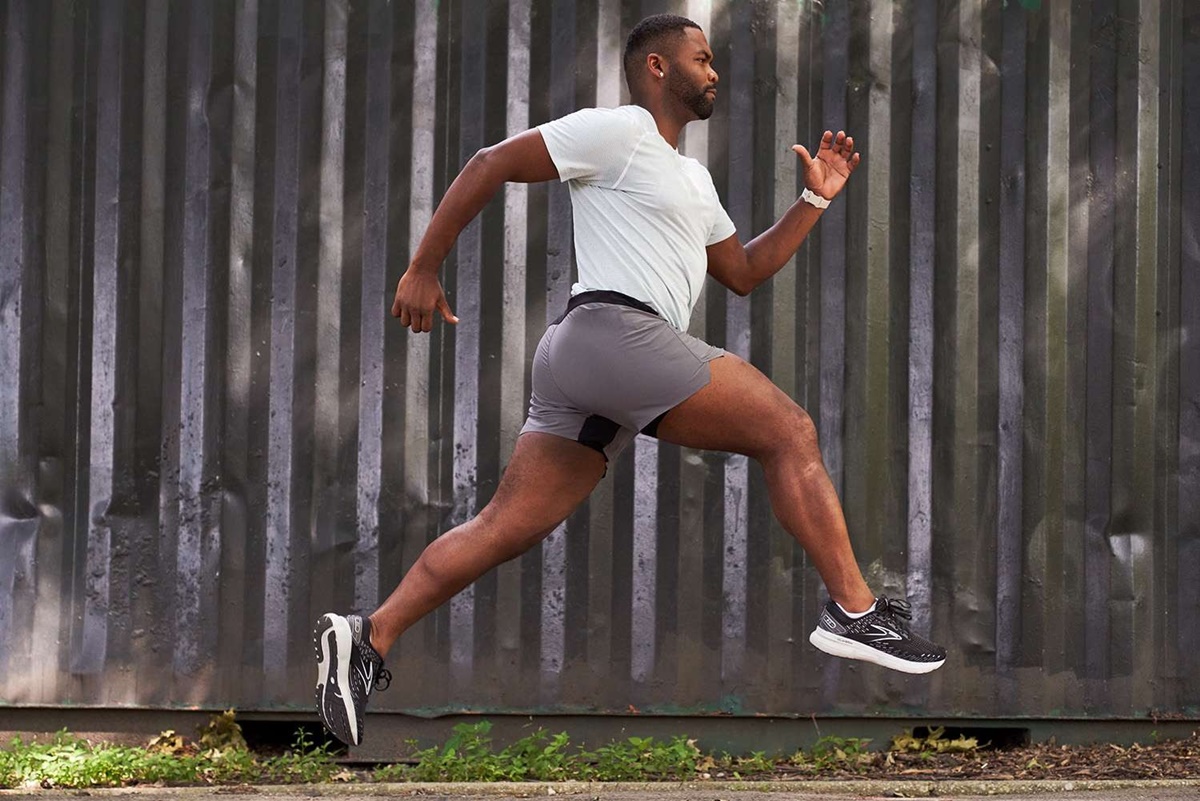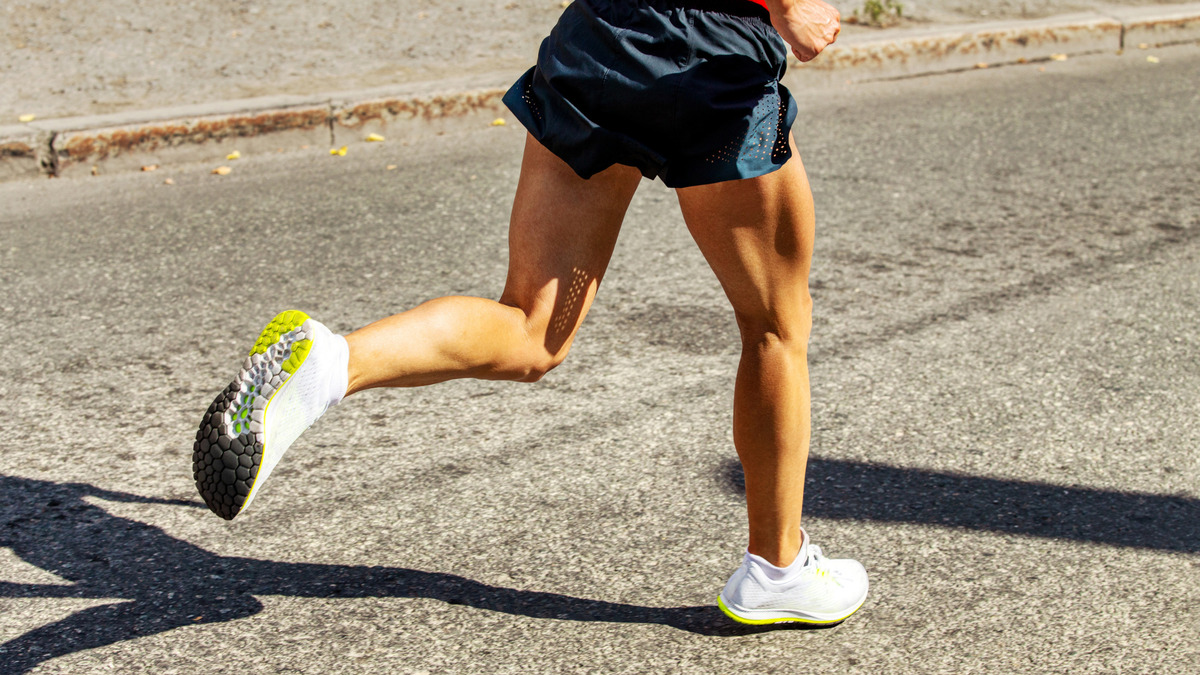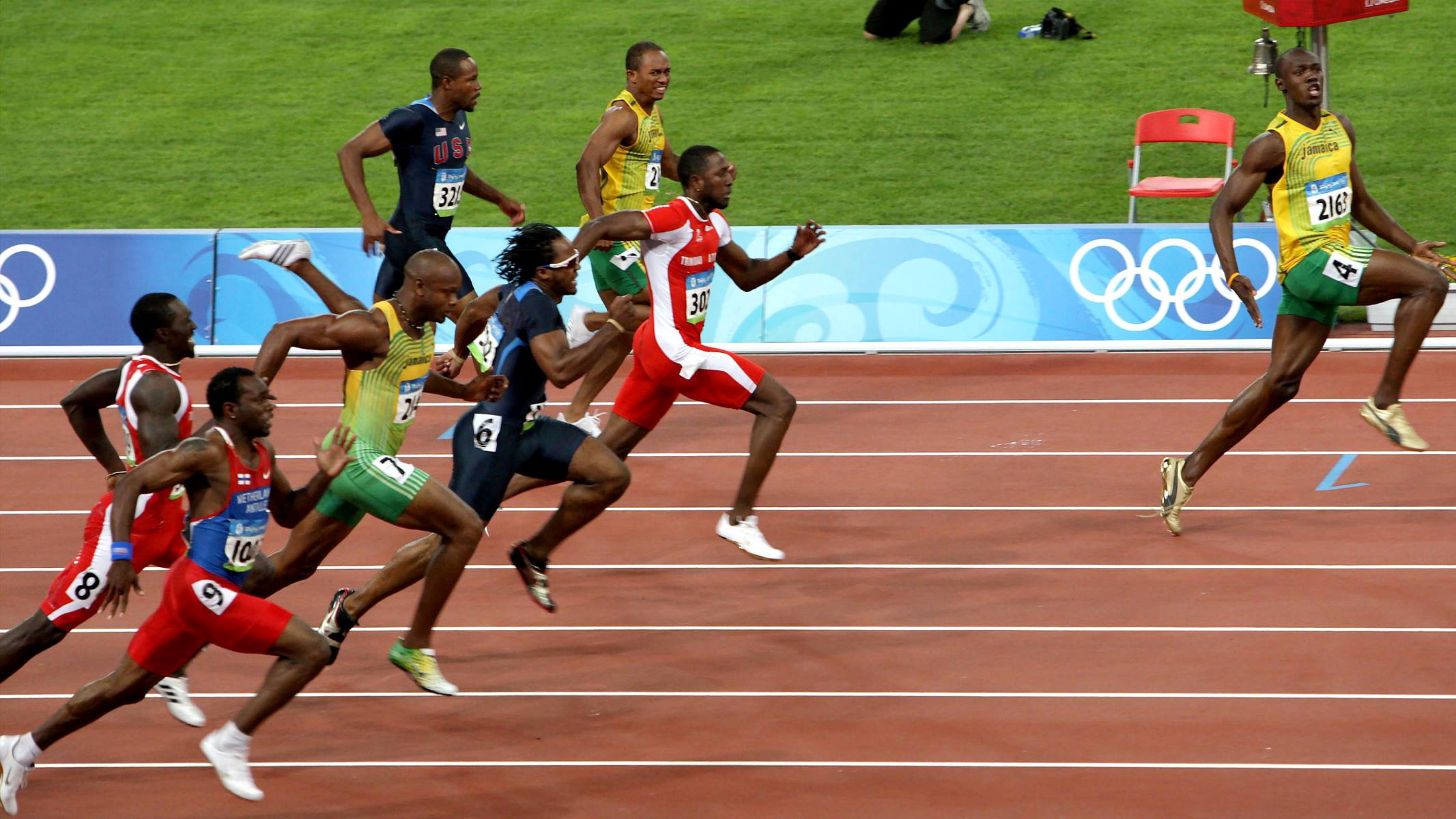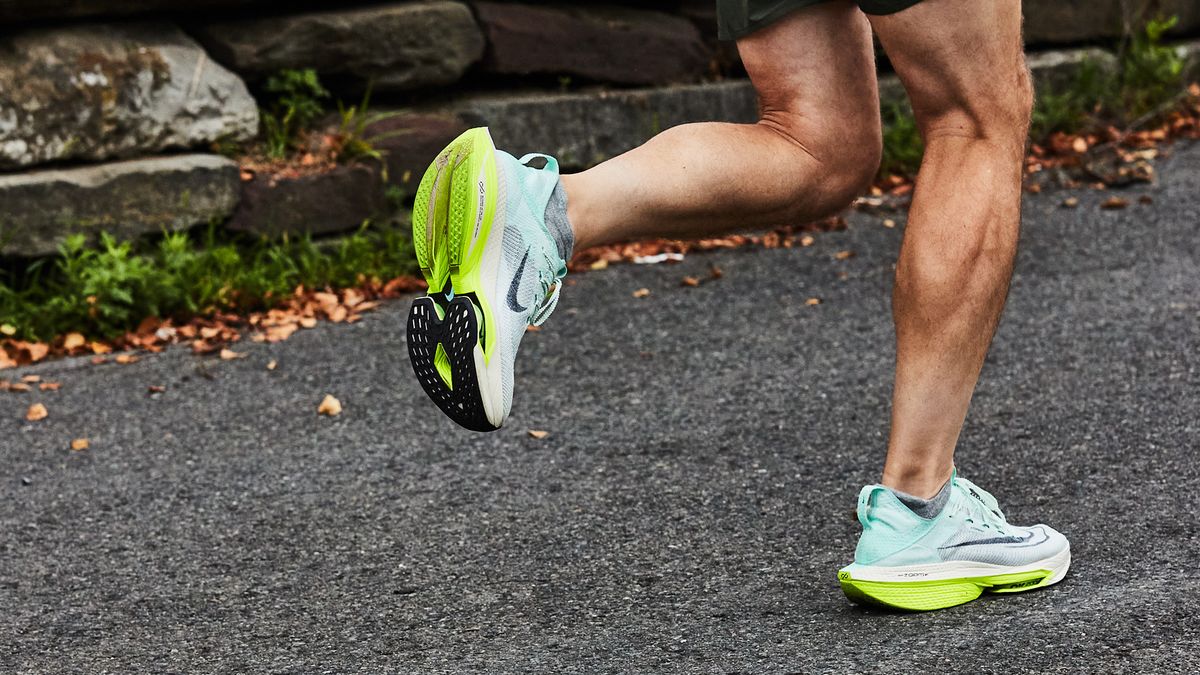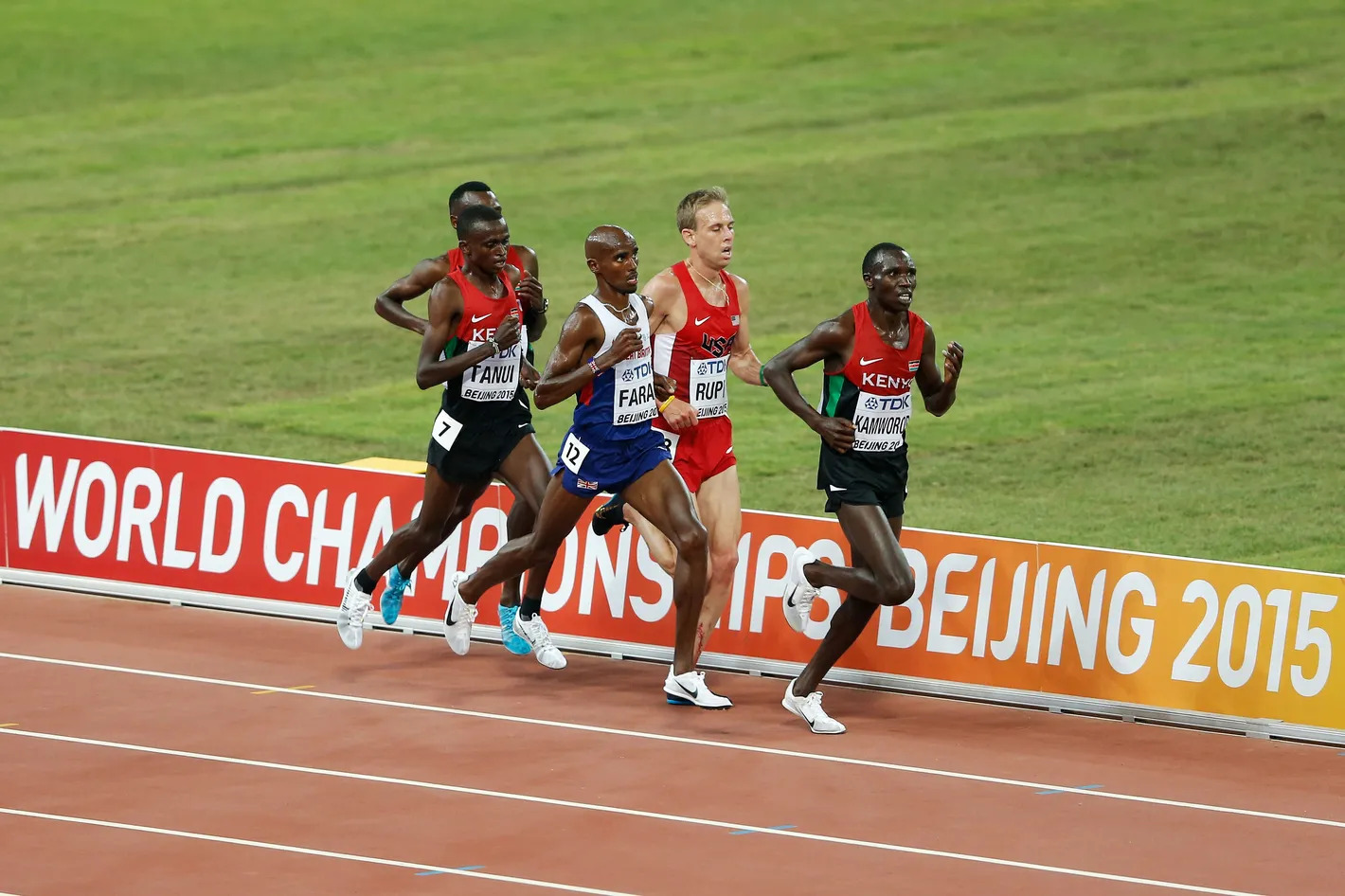Home>Misc>Featured>How To Change Running Form To Minimize Shin Splints


Featured
How To Change Running Form To Minimize Shin Splints
Published: October 15, 2023
Learn how to change your running form to minimize shin splints with our featured guide.
Introduction
Shin splints are a common and frustrating injury that many runners experience. If you are a runner who has dealt with shin splints, you know how much they can disrupt your training and hinder your progress. One of the key factors that can contribute to shin splints is your running form. Your running form plays a crucial role in preventing or minimizing the risk of developing shin splints.
When you run, the impact forces from each stride are absorbed by your muscles and bones. If your running form is inefficient, these forces can be concentrated on the shin area, leading to pain and inflammation. Fortunately, by making some adjustments to your running form, you can significantly reduce the risk of developing shin splints.
In this article, we will explore the connection between running form and shin splints. We will identify common running form mistakes that can contribute to shin splints and discuss effective strategies to change your running form and minimize the risk of this frustrating injury.
What are Shin Splints?
Shin splints, medically known as medial tibial stress syndrome, is a painful condition that affects the lower leg area, specifically the shin. It is characterized by inflammation of the muscles, tendons, and bone tissue surrounding the tibia – the larger of the two bones in the lower leg.
Shin splints often occur in activities that involve repetitive stress on the legs, such as running, jumping, or dancing. Runners, particularly those who are new to the sport or those who have recently increased their training intensity, are especially prone to developing this condition.
The primary symptom of shin splints is a dull, aching pain along the inner edge of the shinbone. This pain can range from mild discomfort to severe pain that hinders your ability to continue running or participating in your desired activities. In some cases, the pain may be accompanied by swelling, tenderness, or even small lumps along the shinbone.
The exact cause of shin splints is not fully understood, but it is commonly believed to be a result of excessive stress on the muscles and tendons that attach to the shinbone. Factors that can contribute to the development of shin splints include:
- Overpronation: This is when your foot rolls excessively inward as you run, putting additional stress on the muscles and tendons on the inner side of the shin.
- Inadequate footwear: Wearing shoes that lack proper cushioning and support can increase the impact forces on your legs, leading to shin splints.
- Sudden increase in training intensity: Rapidly increasing your mileage or the intensity of your workouts without allowing your body to properly adapt can overload the muscles and tendons, increasing the risk of shin splints.
- Poor running form: Running with improper form, such as overstriding or landing too heavily on your heels, can increase the strain on your lower leg and contribute to the development of shin splints.
If you suspect you have shin splints, it is important to rest and allow your body to recover. Ignoring or pushing through the pain can worsen the condition and prolong your recovery time.
Causes of Shin Splints
Shin splints can be caused by a combination of factors, all of which contribute to excessive stress on the lower leg. Understanding these causes can help you identify potential risk factors and take proactive steps to prevent shin splints.
1. Overuse and Overtraining: Shin splints often develop as a result of repetitive stress on the legs, particularly when the body is not given enough time to rest and recover between workouts. Overtraining or abruptly increasing your training volume can overload your muscles and tendons, leading to inflammation and pain in the shin area.
2. Biomechanical Issues: Certain structural abnormalities or imbalances in your body mechanics can contribute to the development of shin splints. These may include overpronation (your foot rolling inward excessively with each step), high arches, or flat feet. These conditions can alter the distribution of forces and put added strain on the shin muscles.
3. Inadequate Footwear: Wearing shoes that lack proper cushioning and support can increase the impact forces on your legs, leading to shin splints. It is essential to choose running shoes that are suitable for your foot type and provide adequate shock absorption.
4. Poor Running Form: Incorrect running form can contribute to overloading the muscles and tendons in the lower leg, leading to shin splints. Common mistakes include overstriding (landing with your foot too far in front of your body), heel striking (landing heavily on your heels), and inadequate arm swing.
5. Unsupportive or Uneven Surfaces: Running on hard surfaces, such as concrete or asphalt, can increase the impact forces transmitted to the legs and contribute to shin splints. Additionally, uneven surfaces like trails or rough terrain can cause instability and stress on the lower leg muscles.
6. Lack of Strength and Flexibility: Weakness in the muscles of the lower leg, particularly the calves and shin muscles, can make them more susceptible to injury. Similarly, inadequate flexibility in these muscles can limit their ability to absorb shock and lead to increased stress on the shin area.
By identifying and addressing these potential causes of shin splints, you can take proactive steps to minimize your risk of developing this painful condition. It is important to listen to your body, gradually increase your training load, maintain proper form, choose appropriate footwear, and prioritize strength and flexibility training for your lower legs.
The Relationship between Running Form and Shin Splints
Your running form plays a crucial role in your risk of developing shin splints. When your form is inefficient, it can lead to an excessive amount of stress and impact on your lower legs, increasing the likelihood of developing this painful condition.
One of the key aspects of running form that can contribute to shin splints is your foot strike pattern. Landing with your foot in a way that puts excessive stress on the shin area can lead to pain and inflammation. For instance, landing with a heavy heel strike or overstriding can increase the impact forces on your legs, causing unnecessary strain on the muscles and tendons around the shinbone.
In addition to foot strike, your overall posture and alignment while running can also impact the risk of shin splints. Running with a forward lean, maintaining proper alignment of your head, shoulders, hips, and feet, can help distribute the forces more evenly throughout your body, reducing the strain on your shins.
Furthermore, the cadence or the number of steps you take per minute can also influence the risk of shin splints. A low cadence, which often corresponds to longer stride lengths, can increase the forces exerted on your lower leg. By increasing your cadence and taking shorter, quicker strides, you can reduce the impact forces and potential stress on your shins.
It is essential to understand that everyone’s running form is unique, and what works for one person may not work for another. However, there are common running form mistakes that are generally associated with an increased risk of shin splints. Developing awareness of these mistakes and making adjustments to your form can significantly reduce your risk of developing shin splints.
By addressing these aspects of running form, you can minimize the impact forces on your lower legs and reduce the strain placed on the muscles and tendons around your shinbone. Taking proactive steps to improve your running form can be an effective strategy to prevent or minimize the risk of developing shin splints.
Common Running Form Mistakes that Lead to Shin Splints
Improper running form can cause excessive stress and strain on the lower legs, increasing the risk of developing shin splints. By identifying common running form mistakes, you can take proactive measures to correct them and minimize the likelihood of experiencing shin splint pain.
1. Heel Striking: Landing heavily on your heels is a common mistake that can lead to shin splints. This occurs when your foot lands in front of your body, causing a jarring impact on the shin area. Instead, aim to land with a midfoot or forefoot strike to distribute the impact forces more evenly and reduce strain on the shins.
2. Overstriding: Overstriding is when your foot lands too far in front of your body, stretching the shin muscles and tendons beyond their optimal range of motion. This puts excessive stress on the lower leg and increases the risk of shin splints. Aim for a higher cadence and shorter, quicker strides to avoid overstriding.
3. Inadequate Arm Swing: Neglecting proper arm swing can affect your overall running form and contribute to inefficient movement. Your arms should swing naturally in sync with your stride, helping to propel you forward. Keeping your arms relaxed and swinging in a coordinated manner can promote a more balanced and efficient running form, reducing stress on the shins.
4. Poor Posture: Running with improper posture, such as a slouched or rounded back, can disrupt the alignment of your body and increase the strain on the lower legs. Maintaining an upright posture, with your head, shoulders, hips, and feet aligned, helps distribute the forces evenly and reduces the risk of shin splints.
5. Inconsistent Foot Strike: Consistency in your foot strike pattern is important for maintaining a smooth and efficient running gait. Switching between different foot strike patterns or running on uneven surfaces can increase the stress on your shins. Try to develop a consistent and stable foot strike pattern that works best for you.
6. Insufficient Warm-Up: Skipping or rushing through a proper warm-up routine can leave your muscles cold and tight, making them more susceptible to injury and shin splints. Take the time to warm up before each run, including dynamic stretches and exercises that target the lower leg muscles.
It is important to note that changing your running form takes time and practice. Gradually implement adjustments and focus on one aspect at a time to allow your body to adapt. Seek guidance from a running coach or physical therapist for personalized advice and feedback on your running form.
By addressing these common running form mistakes, you can minimize the strain on your lower legs and reduce the risk of developing shin splints. Consistency, patience, and proper form will go a long way in preventing this painful and frustrating condition.
How to Change Your Running Form to Minimize Shin Splints
If you have been experiencing shin splints or want to prevent them from occurring, making adjustments to your running form can be an effective strategy. Here are some key strategies to help you change your running form and minimize the risk of developing shin splints:
1. Focus on your Foot Strike: Aim to land with a midfoot or forefoot strike instead of striking with your heel. This helps distribute the impact forces more evenly throughout your foot and lower leg, reducing the strain on your shins.
2. Increase Cadence: Increase your running cadence, which is the number of steps you take per minute. Aiming for a higher cadence helps promote shorter, quicker strides and can reduce the risk of overstriding, which can lead to shin splints.
3. Improve Posture and Alignment: Pay attention to your posture while running. Keep your head up, shoulders relaxed, and maintain a neutral spine. Aligning your head, shoulders, hips, and feet properly helps distribute the impact forces and reduces strain on your shins.
4. Strengthen Lower Leg Muscles: Incorporate strength and flexibility exercises specifically targeting your lower leg muscles into your training routine. Strong calf muscles and shins help absorb shock and reduce the strain on your shins during running.
5. Gradually Increase Mileage and Intensity: Avoid sudden spikes in your training volume or intensity. Gradually progress your mileage and intensity to allow your body time to adapt and minimize the risk of overloading your lower leg muscles.
6. Use Proper Footwear: Ensure that you are wearing running shoes that are appropriate for your foot type and provide adequate cushioning and support. Proper footwear can help absorb impact and reduce the strain on your shins.
7. Listen to Your Body: Pay attention to any discomfort or pain in your shins. If you start to feel shin splint symptoms, it is important to take a break from running and allow your body to rest and recover. Ignoring or pushing through the pain can worsen the condition and prolong your recovery time.
Changing your running form takes time and practice. It is essential to focus on one aspect at a time and gradually implement adjustments. Seek feedback from a running coach or physical therapist to ensure proper form and technique.
Lastly, remember that every runner is unique, and what works for one person may not work for another. It is important to find the adjustments that work best for your body and running style. By taking proactive steps to change your running form, you can minimize the strain on your shins and reduce the risk of developing shin splints.
Focus on your Foot Strike
Your foot strike, or how your foot lands with each step, plays a significant role in determining the impact forces exerted on your lower leg. By focusing on your foot strike and making adjustments, you can minimize the risk of developing shin splints.
Traditionally, heel striking, where your heel lands first with each step, has been a common foot strike pattern. However, this can lead to increased strain on your shins due to the abrupt impact forces concentrated in a smaller area.
An alternative foot strike pattern that can help reduce the risk of shin splints is a midfoot or forefoot strike. With a midfoot strike, the middle of your foot contacts the ground first, while a forefoot strike involves your forefoot, or the ball of your foot, making initial contact.
When you land with a midfoot or forefoot strike, the impact forces are distributed more evenly throughout your foot and lower leg. This reduces the strain on your shins and minimizes the risk of developing shin splints.
To transition to a midfoot or forefoot strike, here are some tips:
Awareness: Pay attention to how your foot lands with each step. Focus on landing with the middle or front part of your foot rather than your heel.
Shorter Strides: Take shorter strides to facilitate a midfoot or forefoot strike. This helps prevent overstriding, where your foot lands too far ahead of your body, which can increase the strain on your shins.
Engage your Calf Muscles: Use your calf muscles to actively push off the ground with each step. This action helps facilitate a midfoot or forefoot strike and promotes a more efficient running form.
Gradual Transition: Transitioning to a new foot strike pattern takes time. Start by incorporating short periods of midfoot or forefoot striking into your runs and gradually increase the duration as your body adapts.
Proper Footwear: Choose running shoes that support your desired foot strike pattern. Shoes with a lower heel-to-toe drop, also known as minimal or zero-drop shoes, can be beneficial for promoting a midfoot or forefoot strike.
It is important to note that foot strike pattern is not a one-size-fits-all approach. Some individuals may naturally have a midfoot or forefoot strike, while others may need to work on transitioning from a heel strike.
A running professional, such as a coach or physical therapist, can provide guidance and feedback specific to your running mechanics. They can assess your foot strike pattern, identify any issues, and offer personalized recommendations to help you improve your foot strike and minimize the risk of shin splints.
Increase Cadence
Your running cadence, also known as stride rate, refers to the number of steps you take per minute while running. Increasing your cadence can be an effective strategy to minimize the risk of developing shin splints and improve overall running efficiency.
A high cadence, typically around 180 steps per minute or more, promotes shorter and quicker strides. This can help reduce the impact forces exerted on your legs and distribute them more evenly, decreasing the strain on your shins.
When runners have a low cadence, they often take longer strides, which increases the likelihood of overstriding. Overstriding occurs when your foot lands too far ahead of your body, causing a braking effect and potentially leading to shin splints.
To increase your cadence and reduce the risk of shin splints, consider the following tips:
Pick the Right Music: Listening to music with a faster beat or utilizing metronome apps can help you synchronize your steps and maintain a consistent cadence. Choose songs with a tempo that matches your desired cadence.
Concentrate on Quick Turnover: Focus on taking quicker steps without necessarily trying to run faster. Imagine your feet lightly touching the ground and quickly lifting off again, aiming for a faster turnover rate.
Use a Metronome: Utilize a metronome app or device that produces an audible beep or vibration at your desired cadence. Set it to the desired beats per minute (BPM) and strive to match your foot strikes to the beats.
Gradual Progression: Increase your cadence gradually to allow your body to adapt. Start with a small increase of 5-10% and gradually work your way up over time. This allows your muscles and tendons to adjust to the new movement pattern.
Focus on Efficiency: Increasing your cadence should not result in sacrificing form or speed. The goal is to maintain good running mechanics while taking quicker steps.
Remember, individual differences and natural running styles can influence the ideal cadence for each person. While a higher cadence is generally beneficial, it is essential to find a cadence that works best for you, taking into account factors such as comfort, efficiency, and injury prevention.
Working with a running coach or having a gait analysis performed can provide valuable insights into your current cadence and help you develop a plan to increase it effectively. They can also evaluate other aspects of your running form that may contribute to shin splints and provide personalized recommendations to optimize your running technique.
Improve Posture and Alignment
Your running posture and alignment are key factors in minimizing the risk of developing shin splints. Good posture and proper alignment help distribute forces evenly throughout your body, reducing the strain on your shins and improving overall running efficiency.
When running, it is important to maintain an upright posture with a neutral spine. Here are some tips to improve your posture and alignment:
Head Position: Keep your head up and gaze forward. Avoid looking down at your feet or hunching your shoulders, as this can disrupt your overall alignment.
Shoulders: Relax your shoulders and keep them down and back. Avoid tensing or hunching your shoulders, as this can affect your upper body alignment and impact your running form.
Hips: Engage your core muscles to stabilize your pelvis and maintain a neutral position. Avoid excessive tilting forward or backward, as this can lead to imbalances and uneven distribution of forces.
Foot Placement: Aim to land with your feet directly underneath your body, rather than reaching out too far in front of you. This helps maintain proper alignment and reduces the strain on your shins.
Arms and Hands: Allow your arms to swing naturally in coordination with your stride. Keep your arms bent at approximately 90 degrees and avoid crossing them in front of your body. Relax your hands and avoid clenching your fists.
Core Stability and Strength: Develop core strength through exercises such as planks, bridges, and rotational movements. A strong core helps stabilize your body, improve posture, and reduce the risk of compensatory movements that can lead to shin splints.
Improving your posture and alignment may require practice and conscious effort. Incorporate regular posture checks into your running routine, focusing on maintaining proper alignment and making necessary adjustments as you run.
A running coach or a physical therapist can provide guidance and cues to help you improve your posture and alignment. They can analyze your running form, identify areas of improvement, and provide specific exercises and techniques to enhance your posture and reduce the risk of shin splints.
By maintaining good posture and alignment while running, you can optimize your running mechanics, reduce strain on your shins, and minimize the risk of developing shin splints.
Strengthen Lower Leg Muscles
Developing strength in the muscles of your lower legs can greatly contribute to minimizing your risk of developing shin splints. Strong and properly conditioned muscles better absorb impact, stabilize the lower leg, and reduce the strain on your shins during running.
Here are some exercises and strategies to help strengthen your lower leg muscles:
Calf Raises: Perform calf raises by standing on a step or elevated surface with the balls of your feet. Slowly raise your heels as high as you can, then lower them back down. This exercise targets the calf muscles and helps improve their strength and stability.
Toe Walks and Heel Walks: These simple exercises involve walking on your toes and heels, respectively, for a short distance. They help strengthen the muscles in your calves, ankles, and shins – all important for minimizing shin splints.
Ankle Dorsiflexion and Plantar Flexion Exercises: Utilize resistance bands or a towel to perform ankle dorsiflexion and plantar flexion exercises. These exercises help strengthen the muscles that control ankle movement and provide stability for your lower leg.
Eccentric Heel Drops: Stand on the edge of a step or stair with your heels hanging off. Slowly lower your heels below the step, allowing your calves to stretch, and then raise your heels back up. This exercise targets the calves and helps improve eccentric control, which is crucial for absorbing shock during running.
Balance and Proprioception Exercises: Incorporate exercises that challenge your balance and improve proprioception. This can include standing on one leg, using balance boards or stability discs, and performing single-leg squats. These exercises enhance muscle control and stability, reducing the risk of imbalance and excessive strain on your shins.
Progressive Resistance Training: Gradually add resistance, such as using weights or resistance bands, to your lower leg exercises. This helps progressively increase the strength and endurance of your calf and shin muscles.
It is important to start with lighter resistance or lower repetitions and gradually increase the challenge as your muscles adapt to the exercises.
Incorporate these exercises into your regular training routine and aim for consistency. Ideally, perform them two to three times a week, allowing for adequate rest and recovery between sessions.
Additionally, prioritize flexibility exercises for your calves and shins, as tightness in these muscles can contribute to shin splints. Stretching and foam rolling the lower leg muscles can help improve flexibility and reduce tension.
Remember, strengthening your lower leg muscles is a long-term process. Consistency and patience are key. If you’re unsure about performing these exercises correctly or need guidance, consider consulting a fitness professional or physical therapist who can assess your specific needs and provide personalized recommendations.
By incorporating targeted strengthening exercises into your routine, you can enhance the stability and strength of your lower leg muscles, reducing the risk of shin splints and supporting your overall running performance.
Gradually Increase Mileage and Intensity
Gradually increasing your running mileage and intensity is essential to minimize the risk of developing shin splints. Rapidly increasing your training load can overload your muscles and tendons, leading to inflammation and pain in the shin area. By following a progressive approach, you allow your body to adapt and reduce the strain on your shins.
Here are some guidelines to help you gradually increase your running mileage and intensity:
Follow the 10% Rule: Increase your weekly mileage or training intensity by no more than 10% each week. This conservative approach gives your body time to adjust and adapt to the increased demands, reducing the risk of overuse injuries such as shin splints.
Listen to Your Body: Pay attention to any warning signs or discomfort during your runs. If you experience persistent pain or discomfort in your shins, it is essential to scale back your mileage or intensity. Ignoring these warning signs can worsen the condition and lead to long-term issues.
Incorporate Rest Days: Include rest days in your training schedule to allow for proper recovery. Rest days are essential for your muscles and tendons to repair and adapt to the stress placed on them during running. Use this time to engage in active recovery activities such as stretching or foam rolling.
Cross-Train: Incorporate cross-training activities, such as cycling, swimming, or strength training, into your routine. Cross-training provides a break from running while maintaining your fitness level and giving your shins a chance to recover from the impact of running.
Quality over Quantity: Focus on the quality of your running workouts rather than just increasing the quantity. Incorporate speed work, interval training, and strength exercises to improve overall performance and reduce the impact on your shins.
Warm up and Cool Down: Prior to each run, perform a dynamic warm-up routine to activate your muscles and prepare them for the upcoming stress. After your run, allow time for a proper cool-down, including static stretching, to help reduce post-run muscle tightness.
Include Recovery Weeks: Periodically schedule recovery weeks into your training plan. During these weeks, decrease your mileage and intensity to allow for thorough recovery and reduce the risk of cumulative fatigue.
Remember, patience and consistency are crucial when gradually increasing your mileage and intensity. The process should be individualized based on your fitness level, running experience, and overall goals.
Working with a running coach or training professional can provide valuable guidance in designing a progressive and personalized training plan that minimizes the risk of shin splints. They can help monitor your progress, assess your running mechanics, and make appropriate adjustments to your training as needed.
By gradually increasing your running mileage and intensity, you give your body time to adapt, reduce the strain on your shins, and minimize the risk of developing shin splints.
Conclusion
Shin splints can be a significant hurdle for runners, causing pain and frustration. However, by understanding the relationship between running form and shin splints, and taking proactive steps to make necessary adjustments, you can minimize the risk of this common running injury.
In this article, we explored various aspects of running form that contribute to shin splints and discussed strategies to modify your form. Focusing on an appropriate foot strike, increasing your cadence, improving posture and alignment, strengthening your lower leg muscles, and gradually increasing mileage and intensity are all effective ways to reduce the strain on your shins and prevent shin splints.
Remember, changing your running form takes time, practice, and patience. It is important to listen to your body, gradually implement adjustments, and seek guidance from a running coach or physical therapist if needed.
Additionally, incorporating proper warm-up and cool-down routines, choosing appropriate footwear, and paying attention to warning signs or discomfort are integral components of shin splint prevention.
By putting these strategies into practice, you can significantly minimize the risk of developing shin splints and enjoy a more successful and injury-free running experience.
Ultimately, every runner is unique, and it may take some experimentation to find what works best for you. Be mindful of your body’s feedback, stay consistent with your training, and seek professional guidance as needed.
With a thorough understanding of the relationship between running form and shin splints, along with implementing the suggested adjustments and strategies outlined in this article, you can pave the way for a more enjoyable, pain-free, and successful running journey.
